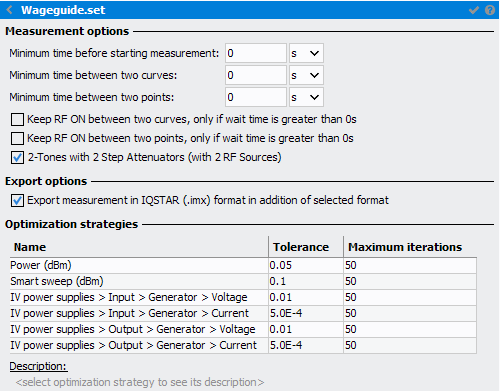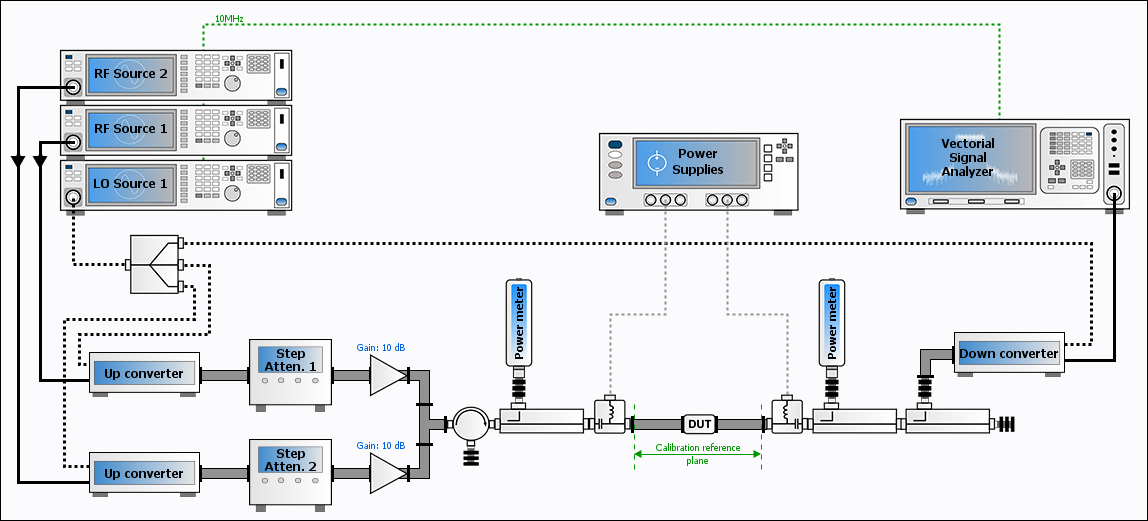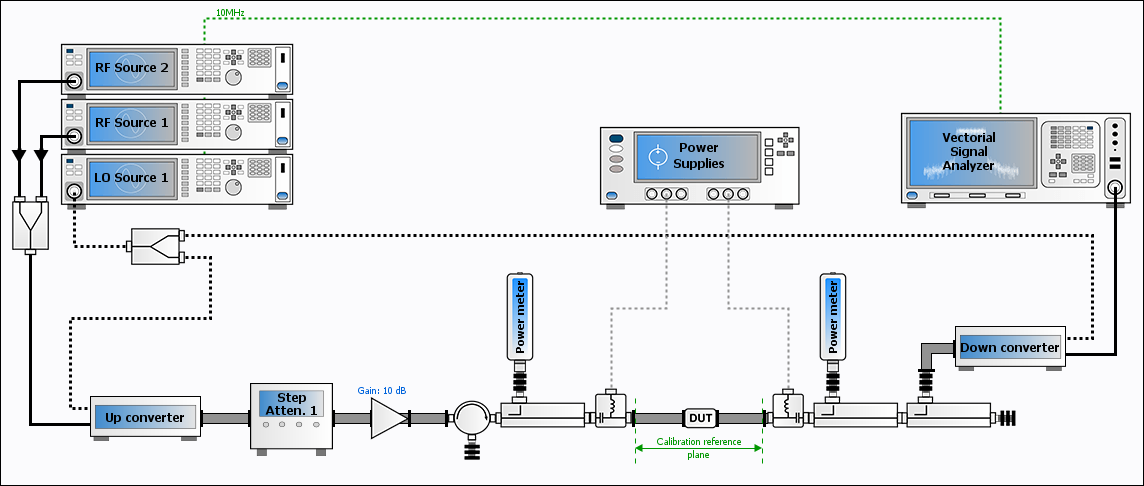Measurement Options & Optimizations Strategies
Clicking in a blank part of the schematic editor, the following menu appears on the right side:

- Measurement Options:
This tab allows to set different measurement options used in IQSTAR:
- Minimum time before starting measurement
- Minimum time between two curves (e.g.: time between a power sweep at f1 and a second power sweep at f2)
- Minimum time between two points (e.g.: time between each point of a power sweep)
- Keep RF ON between two curves, only if wait time is greater than 0: when checked the RF power will stay ON between two power sweeps
- Keep RF ON between two points, only if wait time is greater than 0: when checked the RF power will stay ON between two measurement points
- 2-Tones with 2 Step Attenuators (with 2 RF Sources): when checked
the schematic will use two step attenuators to control each power tones
after up-convertion to combine tones using "magic waveguide
tee".
 if unchecked two tones are combined before up-convertion through coaxial combiner.Note: This configuration can lead to a high level of non-linearity depending on the up-converter specifications.
if unchecked two tones are combined before up-convertion through coaxial combiner.Note: This configuration can lead to a high level of non-linearity depending on the up-converter specifications.
- Export options:
Export Measurement in IQSTAR (*.imx) format in addition of selected format : This option allows to force *.imx in addtion of *.csv, *.im, *.citi and/or *.mdif export choosen in measurement tab (1-Tone Measurement Panel: General).
- Optimizations Strategies:
This tab allows to set the 'Tolerance' and the 'Number of Iterations' of each optimization used in IQSTAR:
- IV optimizations (Input Voltage, Input Current, Output Voltage, Input Current ...): when an IV optimization is done, a feedback is applied between the measurement unit and the power supply in order to have a constant fixed value at the DUT reference plane (“DUT Reference Plane”). For example, for a FET, the output voltage Vds can decrease when the component is in the gain compression region
- Power: when a Power optimization is done, an iterative measurement process is done in order to achieve a specific power value (e.g. : Available Input Power gal to 30dBm) 1-Tone Measurements. This optimization is an alternative of theRaw Power Calibration process
- Smart Sweep: when a Smart Sweep is done, an iterative measurement process is done in order to achieve a specific parameter value (e.g. : Gain Compression of 3 dB) 1-Tone Measurements
